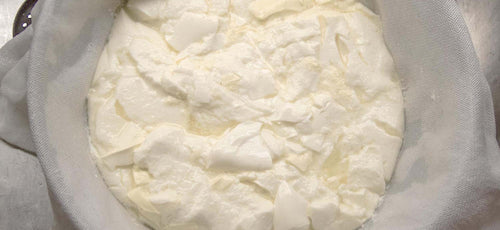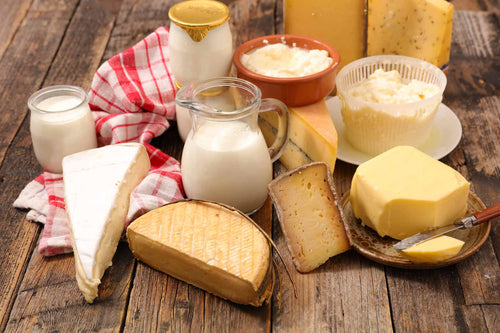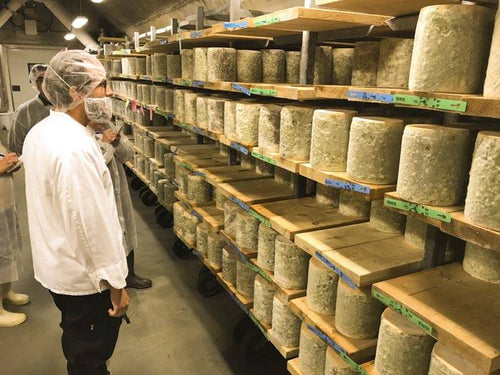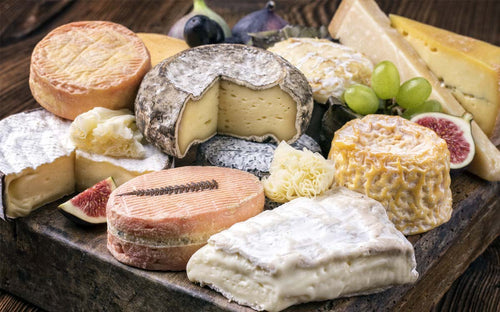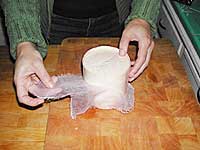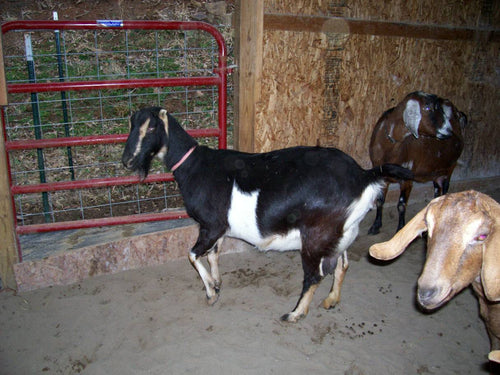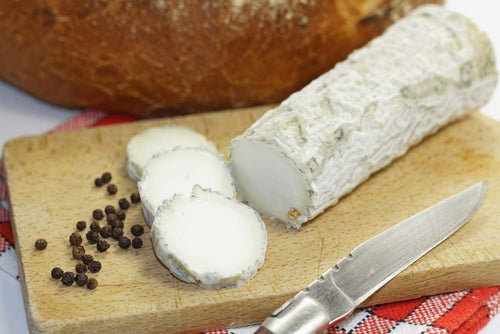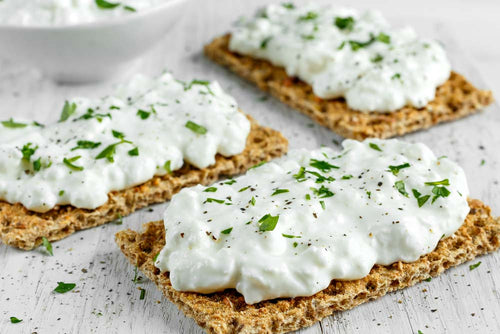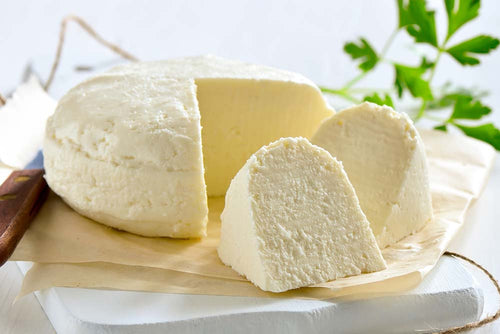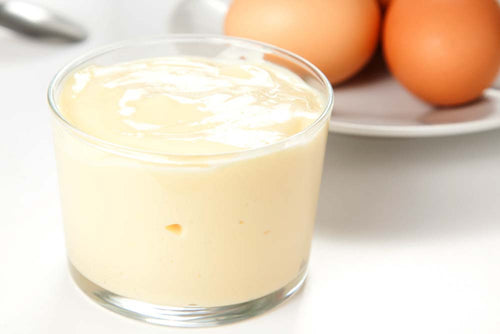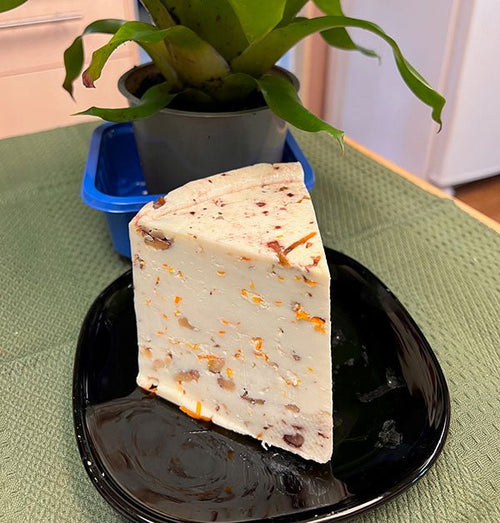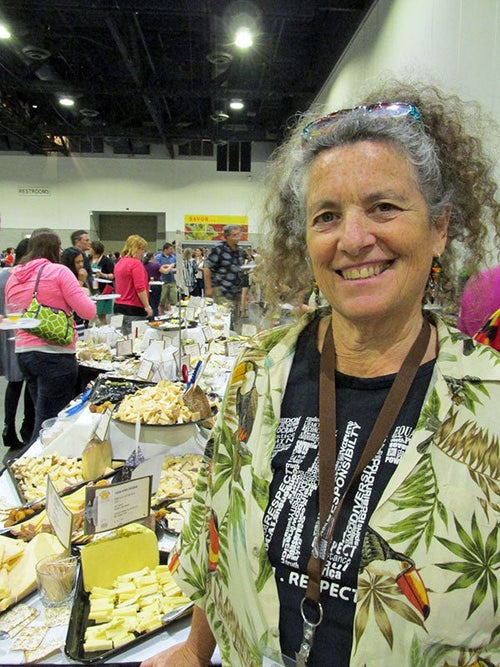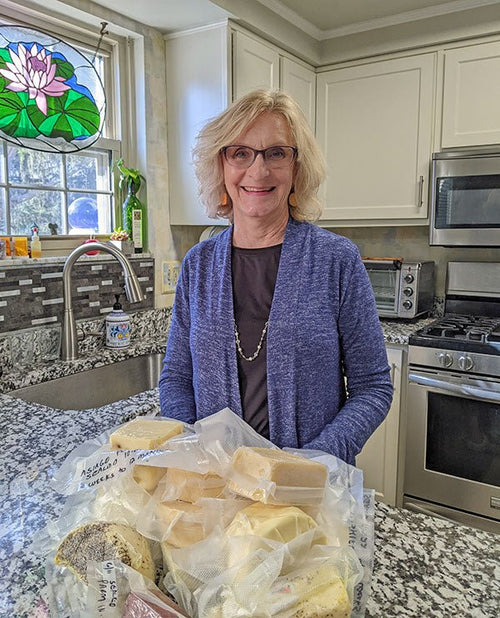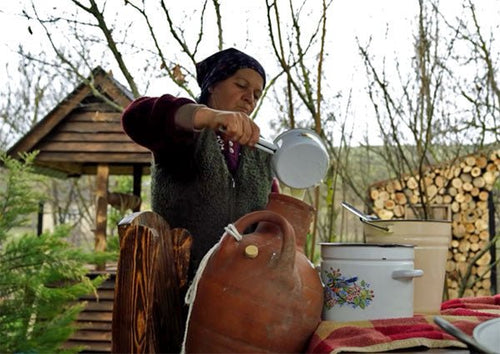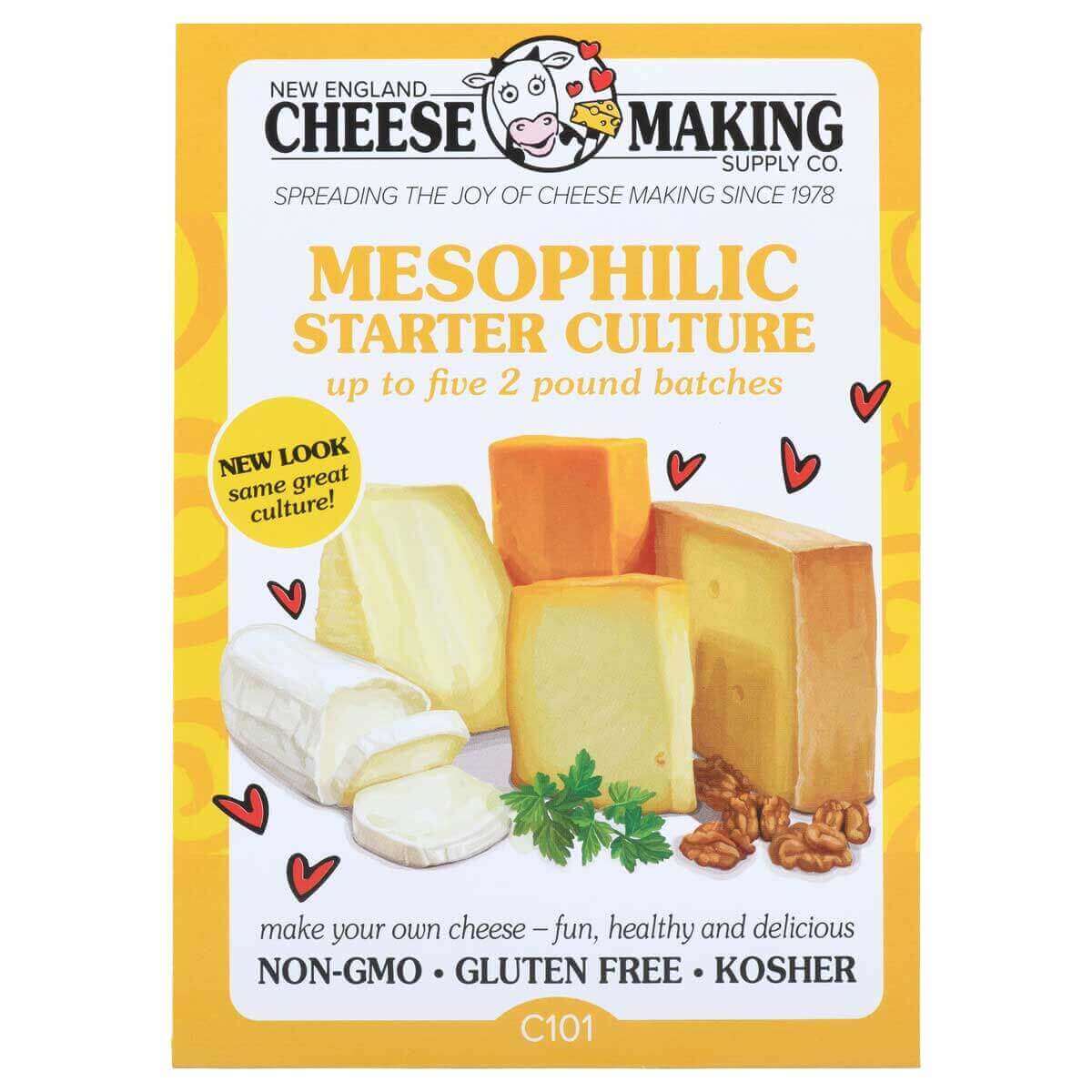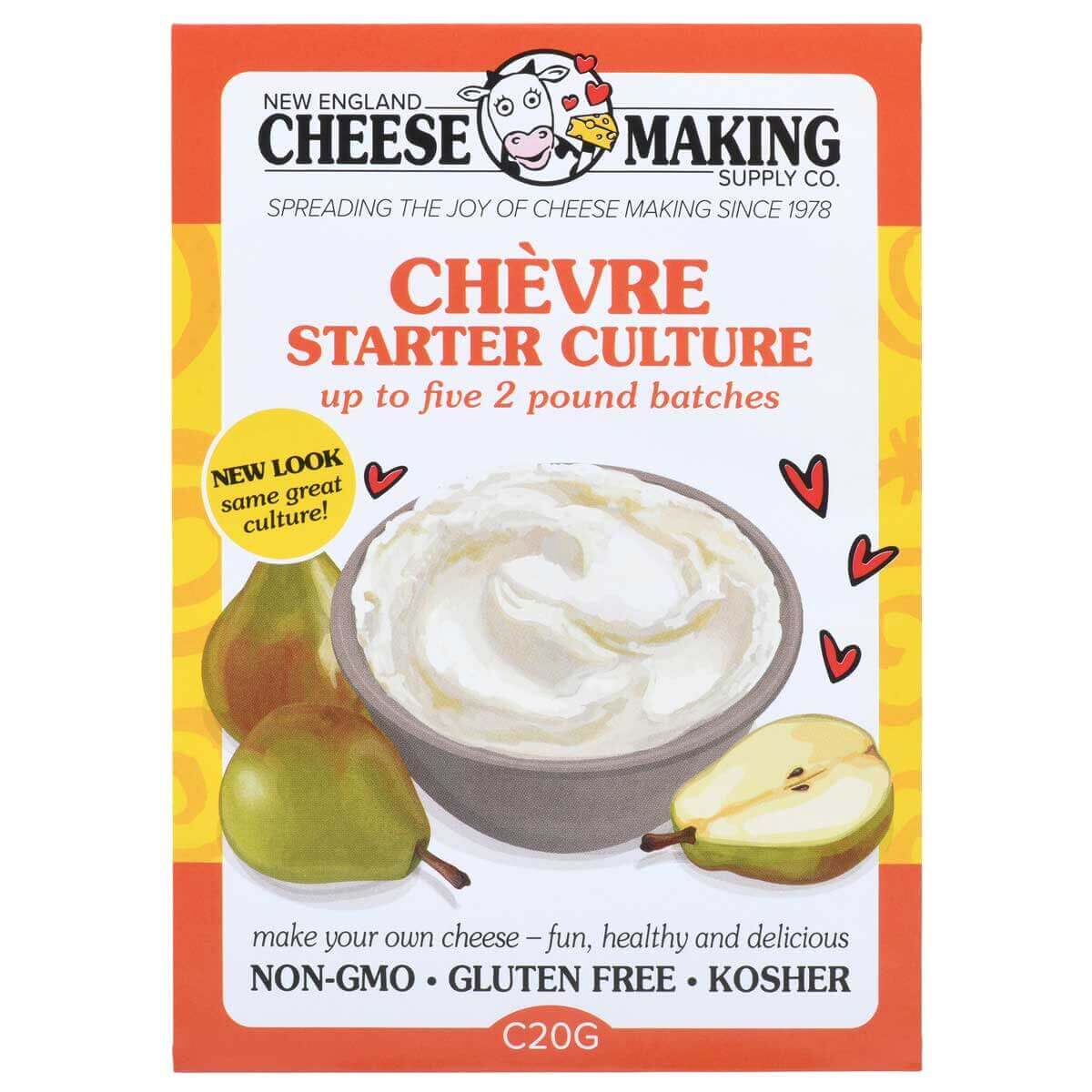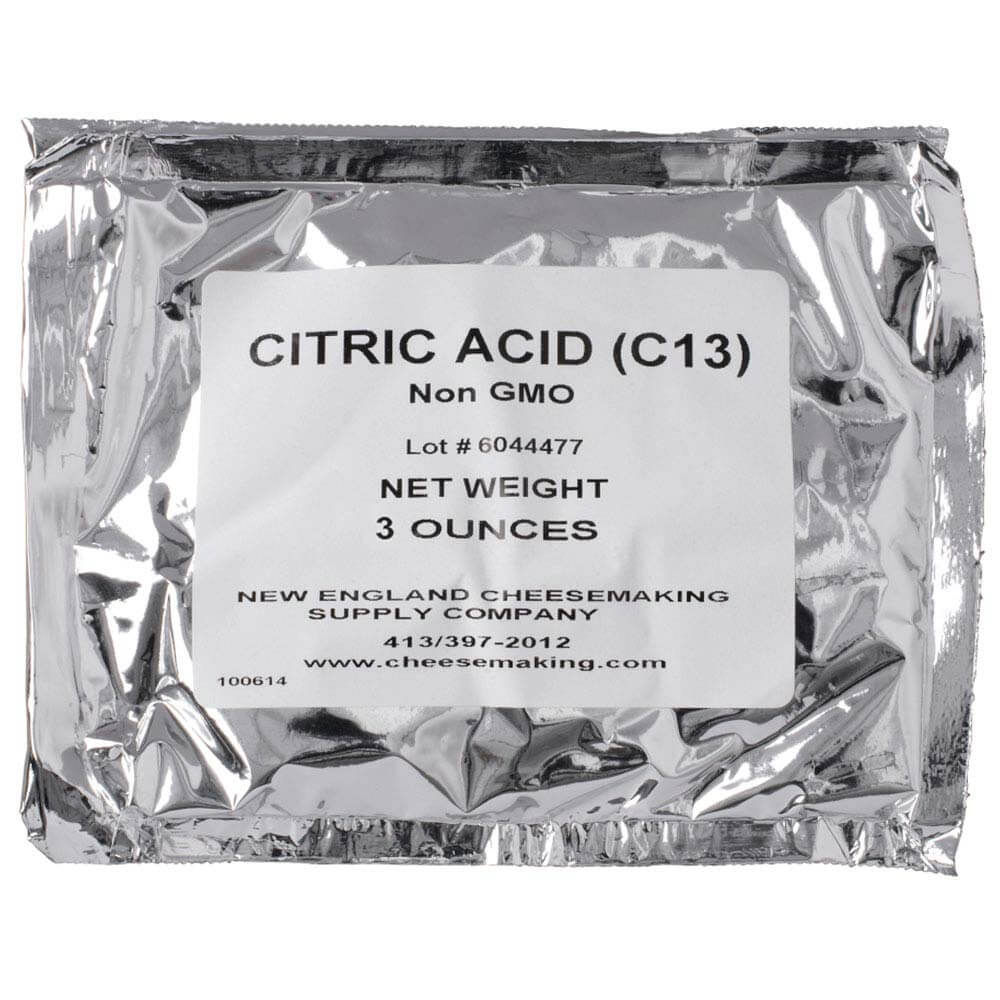
James Plelps in the Bighorns above his house, snowshoeing on an old logging road.
We have done a lot of interviews in the past 12 years – since we started this blog, but James Phelps is the first from Wyoming. In fact, prior to this interview, Wyoming was the only unrepresented state. So, it is with great pleasure that we present to you our first Wyoming home cheesemaker.
James’s Story
I work as a corrosion/coatings professional with pipeline infrastructure. My wife, Jolene and I have an acreage we have been building, remodeling and enjoying for about 7 years now.

View from our west window. We get snowstorms quite frequently so we heat with wood, backup with propane and have a propane generator.

Jolene’s quilts can be found at Cottage and Threads on Facebook and @cottageandthreads on Instagram.
We are hoping to raise some sheep in the future, but for now 2 dogs, 2 cats and a flock of chickens will do.

 We put in a geothermal green house a while back and it has been good for growing what we can’t grow outside.
We put in a geothermal green house a while back and it has been good for growing what we can’t grow outside.
We both love to get outdoors in the mountains and take in all there is to do that’s wild and fun around that.
I’m one of the very few cheese makers in Wyoming.
I know of one in Kaycee who is commercial and makes sheep milk, and a few others using goat milk to make some cheese, but Wyoming milk animals are few and far between.

We borrowed a neighbor’s goats for the summer as a test to see how we got on with each other. We’re looking for Nigerian Dwarfs now (to take care of the sheep we are hoping to raise).
Another reason is Wyoming is a state with around 500k people in a land area that would cover all of ME, VT, and NH with more to spare.
The types of sheep and cattle raised are meat and wool, with very few milk animals. (The high desert and Alpine climate do make it very good for some sheep and cows like Normandy and Jersey.)
The Star Valley was the last place I knew that had a commercial cheese making operation going.
How did you get started?
I got started quite a few years back when, out of curiosity, I bought some rennet tablets. I made cheese from some ultra-pasteurized, ultra-homogenized milk. It was supposed to be a farmhouse style cheddar. It wasted a lot of milk but I got a ball of some kind of cheese like a quick mozzarella. (I later learned that UP milk wasn’t supposed to work.)
That got me started as I find it to be a great stress reducer.
I found a couple of milk sources for raw milk. (Wyoming has great milk laws so it is easier to get started using raw milk.)
I read Sheridan’s first (Sheridan’s Guide to Cheese by Kevin and Seamus Sheridan), a guide to cheese around the world and I got many basics on Youtube. Your website (cheesemaking.com) was an excellent source as well. Once I learned the basic steps, I studied the relationships and differences and how they make the finished products change.
I settled on ButterKäse in the beginning and now I make several of my own varieties based on European cheeses.

Wine Blue – I added a bottle of red wine to the milk before I added the cultures. (I heated the wine first to remove the alcohol). I haven’t tried it yet.

White mold is starting to form on top. This started with a washed rind but has been wrapped to end as a soft cheese (like Brie).

A 2 year old Formaggio Ubriaco that I washed with blue cheese culture and pierced once it got going. I call it Drunken Blue. It is very sweet with very blue cheese flavor.

My favorite blue cheese – a Butterkase made very soft but with a cooked and rinsed curd. The blue cultures are added to the curd in a salt brine as post-drain but pre-mold. Once the mold appears, I pierce them. The cheese has a fresh soft body and great mild blue flavor.
I have a son who has contacted a grad student who studies medieval food. Researching the oldest records about cheese making, I hope to uncover something ancient that I can recreate new again.😊
One of the greatest challenges here is the super dry climate. It causes difficulties in keeping the cheese rind at the correct humidity. That’s one reason why I am digging a real cheese cave. We have a sandstone shale hillside right beside the south side of the house, so the cave will be in a north slope.
I have given classes to people and they have used those skills to make cheese for the farmer’s market. Many of the milk producers sell milk and yogurt, but wanted to learn how to use the excess milk for cheese.
I enjoy helping those with milk animals to create saleable products and I would someday like to have milk sheep and goats to create cheeses that are unique to Wyoming.

The blue and white is colored envelope stamp wax. I use pure beeswax as the first layer, then apply the art wax. I put scotch tape on it then use a sharpie to write the details. I never mix the art wax in when I reuse the wax.
Wyoming has the best cottage food laws in the US. I can milk sheep, goats and cows, make cheese and sell it at the farmer’s market.
I really want to help others, by teaching because; If I can get enough people making selling and enjoying these laws, we will all be better off as a community. I stress sanitation, and process safety in my classes. I ask that people not only understand the risk of cheese that is under 60 days in maturation but that they inform those they sell to.
It is a matter of responsible communication so the consumer can make the choice. The more that people get interested, the more people will raise dairy animals, the more people will make cheese and there will be a larger market for the artisan. (To contact me about my classes, message me from my new Facebook page- https://www.facebook.com/CheeseWyoming).
I taught one class and a milk producer made and sold my Persian feta thereafter. I was going to host more but then Covid hit, so we are very excited to see it going away!
I might note that my Persian feta is quite different from what is found on the recipe boards. My brother-in-law, growing up in Iran in the 50’s in the town of Tabriz helped his family make this cheese as a boy. Collaborating with him and adjusting the cream content (its traditional to use sheep’s milk), we re-created this true Persian gem. I hope you and others enjoy it!
Proportional Tabriz Feta Recipe:
This kind of recipe is one of the ways I teach people so they don’t flub when moving from a 2 gallon batch to a 4. If they have to create the quantities per volume of milk, I think it helps them understand the need to change in scale with the volume of milk. (The more traditional recipe, with actual quantities is shown after it.)
Sheep’s milk or 1.5x the cream content of Jersey milk (raw preferred)
Flora Danica – 1/2 as much as called for per milk volume
M100 – 1/2 as much as called for per milk volume
Calf lipase – as much as called for per milk volume
Calcium chloride (if milk is pasteurized) as much as called for per milk volume
Calf Rennet as much as called for per milk volume
Bring milk to 85F, inoculate, let stand 1 hour.
Slowly rise to 98F (15 minutes), add diluted rennet (in 1/2 cup water).
Let set 1 hour and check for clean break.
Cut curd with a whisk and let heal.
Stir very slowly for about 20 minutes till curd forms well in hand.
Place curds in 2-4 feta forms. Drain using one a top the other for 10 minutes. Trade bottom with top for another 10.
Repeat sequence.
Flip cheese in molds and combine them if there is room in mold, and press very lightly overnight.
Prepare 8% Himalayan salt brine with 1/2% calcium chloride.*
For the liquid, use 1 tablespoon white wine vinegar per quart.
Cut feta into 1/2″ cubes place in sterilized jars and cover with brine. Store in refrigerator.
It is ready in 2 months. I have aged it for a year with excellent results.
Conventional Tabriz Feta Recipe:
Sheep’s milk or 1.5x the cream content Jersey milk (raw preferred) – 2 gallons
Flora Danica – 1/8 tsp (50 DCU)
M-100 – 1/8 tsp (50DCU)
Calf lipase – 1/8 tsp
Calcium chloride – ½ tsp for pasteurized milk and 1 teaspoon for brine mix
Calf Rennet – ½ tsp
Bring milk to 85F, inoculate, let stand 1 hour.
Slowly rise to 98F (15 minutes) add diluted rennet (1/2 cup water).
Let set 1 hour and check for clean break.
Cut curd with a whisk and let heal.
Stir very slowly for about 20 minutes till curd forms well in hand.
Place curds in 2-4 feta forms. Drain using one a top the other for 10 minutes. Trade bottom with top for another 10.
Repeat sequence.
Flip cheese in molds and combine them if there is room in mold, and press very lightly overnight.
Prepare 8% – 10% Himalayan salt brine with 1/2% (minimum) being calcium chloride.*
For the liquid, use 1 tablespoon white wine vinegar per quart.
Cut feta into 1/2″ cubes or large chunks that will fit in quart jars. Place in sterilized jars and cover with brine. Store in refrigerator.
It is ready in 2 months. I have aged it for a year in the fridge with excellent results.

































































